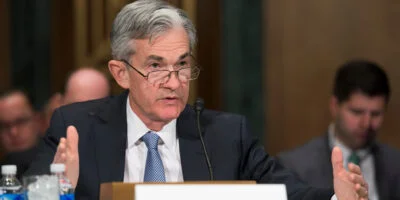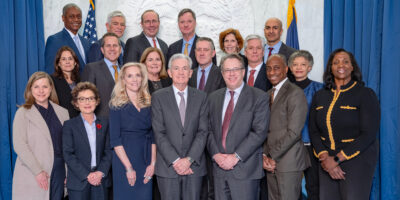The Incredible Morphing Fed
Student blogger Andrew Mack points out that the Fed was a creature of the “progressive” ethos of the early 20th century—i.e. the idea that powerful centralized institutions could “manage” the economy better than free, competitive individuals.
But it is nonetheless interesting to note that when the Fed was founded, it was very different, and much weaker, than the creature it eventually became. The original Fed was set up only to issue “emergency” currency in the form of discounts (loans) to illiquid banks, and only against “good collateral.” Federal Reserve Notes (the “emergency” currency) were backed by a remarkably high gold reserve of 40%. Moreover, the Fed was supposed to be a “decentralized central bank,” with each of the 12 regional branches deciding the appropriate “discount policy” (i.e. rate it charged local banks for these emergency discount loans) for its own region, and able to change it independently of the others.
But it didn’t take long for the Fed to step outside of its charter and take more powers and responsibilities unto itself. The Fed was quickly called upon to help finance government borrowing during WWI (another Progressive project). The Fed issued new liabilities (i.e. printed money) to help finance the government’s borrowing and keep interest rates low (sound familiar?). This inaugurated the dramatic WWI inflation and the necessity for the sharp contraction in 1920-1921.
Later in the 1920s the Fed, under the influence of progressive economics, aimed at “money management,” taking it upon itself to steer bank lending and inflation through open market operations. The Fed kept inflation close to 0%, but to do so it had to break the rules of the gold standard. When gold flowed into the US economy in the late 20s, the Fed “sterilized” it and kept it from adding to the money supply.
Thus when banking panics hit, beginning in 1930, the Fed was loaded with gold but nonetheless refused to monetize it or do much in the way of discounting to help the distressed banks. And so the Fed sat by while almost 10,000 banks failed. It had neglected to do the very thing it was created for—lend to banks in crisis. In other words, the Fed had failed miserably.
So what was done? The gold standard, which the Fed had willfully stifled, was abandoned, and the Fed was given more power, now centralized in Washington. Under the Banking Act of 1935, the Fed’s open market committee was given power to set interest rates and reserve requirements for the whole country—the basis of modern monetary policy
The Fed had completely transmogrified: from its original, more humble beginnings as merely a decentralized “lender of last resort,” the Fed became a full-fledged central bank with standard monetary policy powers. Thus in 20 short years, the Fed grew from a decentralized issuer of emergency currency, into a fiat money monopoly central bank.
Senator Carter Glass, one of the original authors of the Federal Reserve Act, had this to say: “It is now presumed to make the open-market committee the supreme power in the determination of the credits of the country. No such thing was intended [by the Federal Reserve Act] and no such thing should ever be done.” Indeed. But when you create an ultimately political institution, at the behest of the government, you should not be surprised when it morphs to meet political ends.
Tyler Watts is an assistant professor of economics at Ball State University.
Image: Sujin Jetkasettakorn/ FreeDigitalPhotos.net








